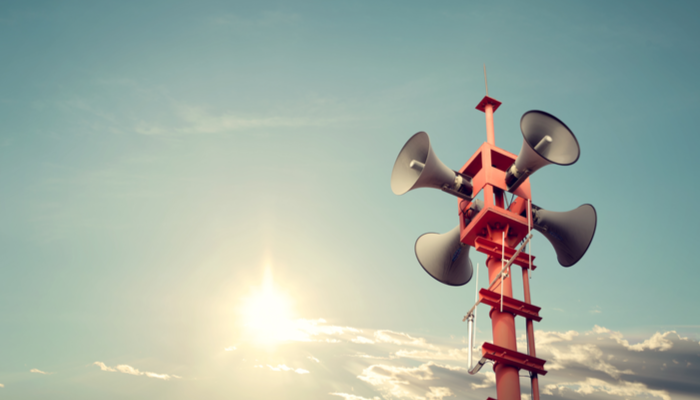Life science trade shows are usually a solid fixture in PR and marketing calendars, but with the Coronavirus (COVID-19) outbreak gathering pace, a growing number of shows are being postponed or cancelled. However, even at a late stage, all is not lost. With a little creativity, there are numerous ways to leverage your existing trade show preparations by turning to alternative channels to reach your target audience with your organisation’s key messages.
Since the first reports of COVID-19 from Wuhan, China, on 31 December 2019, there have been more than 100,000 confirmed cases across 100+ countries, resulting in more than 4,000 deaths. As the outbreak continues, official health and travel guidance is being updated daily.
In response, many event organisers have made the tough decision to cancel or postpone events – including Arablab+ 2020, Analytica, DIA Europe, BIO Asia International Conference, CPhI Japan 2020, Phar-East 2020, and Forum Labo. Other (often smaller) conferences and trade shows are still cautiously going ahead with enhanced hygiene facilities. It remains to be seen what the impact will be on delegate numbers but they are likely to be significantly lower than normal.
My life science trade show has been cancelled. What now?
Every marketer knows that preparing for trade shows is both time-consuming and expensive. So for events to be cancelled at late notice is no small issue. However, with a bit of creative thinking and some PR know-how, it’s still possible to get your key messages out to your target audiences. Here we run through nine 'tried and tested' alternative approaches you might want to adopt.
1. Keep the media informed with a virtual press conference
Regardless of whether you planned a press conference or not, if you have news to announce, then consider inviting the media to a virtual press conference. Any standard web conferencing facility can be used to share your presentation, deliver statements from key experts and, ideally, unveil videos of your new product in action.
Like any press conference, you'll still need media engagement so identify the most relevant media contacts for your intended audience, invite them to your virtual event and, importantly, provide them with a compelling reason to attend. With long-established relationships with editorial contacts across the life science trade media, BioStrata can help you get the right people signed up to your event. Virtual press conferences can generate great coverage of your news – especially when you provide plenty of opportunity for the media to ask questions and obtain quotes.
2. Tap into the reach of the trade media
The trade media offers a highly effective and cost-efficient way of reaching a vast audience. If you have news to share, then capture your key message(s) in a press release along with the who, what, where, why, when, how of the story. To maximise engagement, demonstrate in the press release why this news is important and what impact it will have for end-users and other beneficiaries.
When you’re happy with your press release, it’s time to make sure it’s seen by key media contacts. Using a newswire service to target the distribution of your press release is a great way of reaching all the important media who are active in the relevant geographies and industry sectors. Life Science Newswire, for example, offers this capability through a cost-effective pay-as-you-go approach.
In addition, explore which of the media titles is best placed to help you reach your target audience and pitch a feature article to the editorial team. To be successful here, you will need to reach the right person/people with your pitch. If you have already created content as part of your trade show preparation, then you are already halfway there. Look at how to repackage this information to make it suitable for the trade media publication.
3. Turn your conference presentation into a webinar
There is no reason not to deliver your conference presentation but to an online audience instead. Record it as a live webinar and then provide on-demand recordings to those who couldn’t attend. This is an ideal way of reaching both registered delegates and non-delegates alike – although you may want to offer an exclusive preview for delegates. See below for ways to announce the webinar and drive registrations.
4. Host posters and other resources online
Perhaps you were due to present a poster at the trade show or had prepared literature to share with interested individuals on your exhibition booth. Simply repackage your key content and messages as downloadable posters, whitepapers, infographics and blogs instead and put them on your website. To keep visitors engaged and to encourage browsing through various relevant materials, create a content hub that is specific to the trade show.You could even use the hub to generate leads by gating a piece of high-value content. And don’t forget to include information for the media too such as news releases, useful facts and figures, FAQs, and images. A dedicated online newsroom takes this to the next level. Just ask us how.
5. Email event registrants to share your online resources
One key reason for attending conferences and trade shows is to reach prospective customers and key opinion leaders outside of your existing contacts database. In the absence of a show, liaise with conference organisers to leverage delegate email lists and send out your own emailer with a call to action (CTA) to register for your webinar or download your online resources. Unless it was part of an exhibitors' package, there will likely be a cost for doing this. Ensure the list is of high-quality and contains relevant contacts that would expect to hear from you, should mean it will be a worthwhile lead-generation investment.
6. Target delegates with LinkedIn ads
You can reach would-be delegates on LinkedIn by posting in groups and using event hashtags. However, a more effective way of getting your key messages and CTAs in front of delegates is to employ LinkedIn ads to target members using profile-based demographic information. LinkedIn Campaign Manager allows you to segment your audiences in several ways and combine different targeting options based on real, member-generated demographic data to reach the right audience: job title, company, industry, seniority, and more. What’s more, various ad formats can be used including text, single-image, carousel, video, dynamic, or message ads, so you have the flexibility to create the type of content that will best resonate with your target audience.
7. Tweet all about it
Monitor Twitter for conversations around the cancellation of the trade show and surf the attention. To engage with existing and new contacts, interact with posts from the media and others who were planning to attend the show. You can also use the channel to promote your show-related online resources, being sure to use relevant hashtags for maximum effect.
Don’t be afraid to take the conversation to the next level. When people engage with your tweets, it’s important to tailor your reply and see if you can provide extra value. For example, depending on the discussion, you could suggest another piece of content that answers their question, or provide them with a telephone number so they can speak directly to one of your internal experts.
8. Get creative and go viral
Ok, so given the context, 'go viral' may not be the best phrase…but think creatively about how you can post highly shareable content. Whether it's an image, a challenge, an engaging hashtag or even an awesome explainer video, consider what it would take to stand out from the crowd and achieve those likes and shares.
9. Check out virtual life science conferences
Lastly, look out for virtual conferences springing up. SelectScience has already announced its Virtual Analytical Summit (31 March – 02 April 2020) and more are sure to follow. These may provide an ideal opportunity for interaction with prospective customers – all without having to negotiate around travel restrictions.
A cancelled or postponed trade show can have a big impact for marketing teams that have already invested considerable amounts of money in preparation.
However, there is an opportunity to leverage a range of PR and marketing tactics to repurpose your existing materials to raise awareness, secure media coverage, and generate leads. All without leaving the office.
If you’re looking to know more about how we can help you, then why not contact us for a free consultation?




